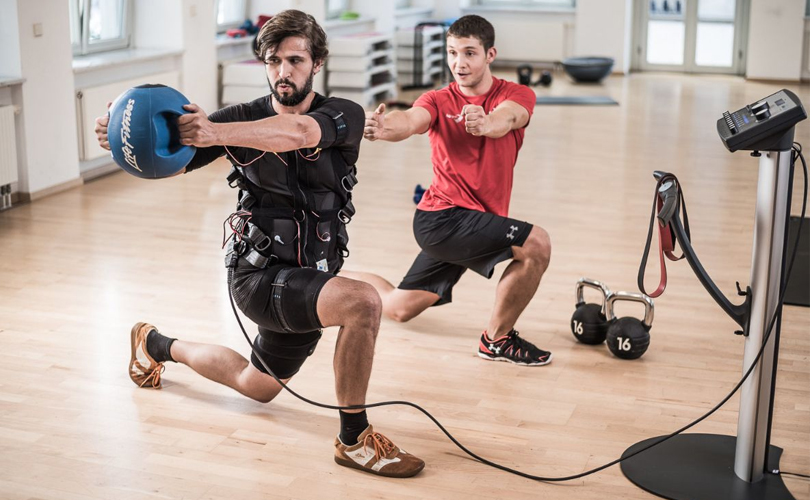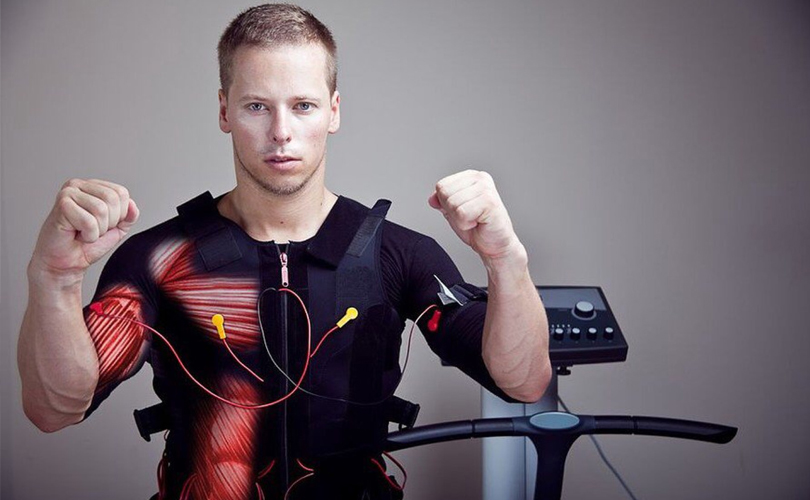
In a world where fitness innovations continually push the boundaries of what’s possible, Electromagnetic Compatibility (EMC) training stands out as a game-changer. This article delves deep into the realm of “What is EMS Training: How it Works, Pros, Cons, and Effectiveness of Training,” offering a comprehensive guide to unveil the mysteries and potential of this transformative fitness approach.
EMS training leverages electrical impulses to stimulate muscle contractions, revolutionizing traditional workouts. Its allure lies in efficient workouts, accelerated muscle growth, and a range of benefits. However, it’s essential to navigate the nuanced landscape of EMS, considering its advantages and limitations while evaluating its real-world effectiveness.
Whether you’re a fitness enthusiast looking to supercharge your routine or a newcomer intrigued by the possibilities of EMS training, this article is your gateway to understanding, optimizing, and harnessing the power of this fitness revolution.
We also made a review for you about Muscle Stimulators, you can watch it here – Best Muscle Stimulators
Table of Contents
EMS Training for Weight Loss: We Briefly Explain What it is

EMS, short for Electrical Muscle Stimulation, essentially means using electrical impulses to stimulate muscles. It involves a special device that sends these impulses through electrodes attached to your body, leading to muscle contractions similar to those experienced during strength training. What matters most in EMS training is how well the instructor operates the device and the frequency and strength of the signals it produces, rather than the number of sets or reps.
The concept of electrical stimulation isn’t a new one. Back in the 1950s, Soviet scientists were already using this method to prepare and aid in the recovery of cosmonauts after spaceflight. A decade later, this technology gained more traction, finding its way into physiotherapy for German football players. Fast forward another ten years, and American instructors introduced electrical stimulation as a readily available fitness program accessible to the public.
Pros and cons of EMS
|
|
EMS Training: What it is and How it Works

The advantage of EMC training lies in its remarkable effectiveness, surpassing conventional physical workouts on simulators by an impressive margin of 30-40%. This superiority stems from the unique mechanism of electrical signal delivery to stimulate muscle contractions.
In traditional fitness or strength exercises, the human body instinctively conserves energy through a range of protective mechanisms. These mechanisms, while essential for our safety, hinder simultaneous muscle contractions. Consequently, it becomes challenging for an individual to engage all their muscles simultaneously.
However, during electrical stimulation, the body bypasses these protective measures aimed at energy conservation. Instead, an impulse is delivered to all muscle fibers, including those typically inactive during regular physical activity. This groundbreaking approach allows for the uniform development of the muscle framework, fostering balanced growth and exceptional results.
Is EMS Training Safe?

This question is at the forefront of many minds when considering the adoption of Electrical Muscle Stimulation (EMS) training as part of their fitness regimen. The answer lies in a nuanced understanding of both the benefits and contraindications associated with EMS. While EMS offers an array of advantages, its safety hinges on various factors, including an individual’s health status and adherence to guidelines. Understanding and respecting contraindications, seeking professional guidance, and using certified EMS equipment are crucial steps in ensuring a safe and effective EMS training experience. Ultimately, safety in EMS training is attainable when approached with knowledge, responsibility, and the guidance of experts.
Does EMS Training Help Your Abs?

Electrical Muscle Stimulation (EMS) training has gained attention for its potential to enhance muscle development, including the abdominal muscles. EMS devices can effectively target and stimulate the core muscles, which include the abs, leading to muscle contractions and engagement. This can complement traditional abdominal workouts and aid in strengthening and toning the abdominal area.
However, it’s important to note that EMS training alone may not be a magic solution for achieving well-defined abs. It should be combined with a balanced diet and a holistic fitness regimen that includes both cardiovascular exercise and traditional strength training to achieve optimal results. EMS training can be a valuable addition to your fitness routine when used in conjunction with other exercises and a healthy lifestyle.
How is The Lesson Going?

Training with electrical stimulation, much like traditional exercises, elicits an increase in heart rate and deepens respiration. When the electrical impulse surges through the muscles, resistance becomes a formidable challenge to overcome, intensifying even the simplest of exercises.
A typical session spans approximately 25 minutes and adheres to a standardized structure:
- Warm-up: The training session commences with a crucial warm-up phase, preparing the body for the forthcoming workout.
- Core Training: This phase forms the core of the session, where the main exercises are executed. These encompass a range of familiar physical activities, including push-ups, squats, crunches, lunges, and planks, among others.
- Recovery: As the session progresses, there’s a dedicated phase for recovery, allowing the body to recuperate and adapt to the intense muscle contractions induced by electrical stimulation.
Participants don a specially designed suit, complete with strategically placed electrodes connected to wires through which the impulses will course. Throughout the session, the vigilant trainer meticulously monitors the intensity of the signals dispatched. Adjustments are made as needed, tailoring the power of the impulses to suit each area of the body and accommodate the individual’s fitness level and training sequence. The result? A personalized and effective training experience that pushes the boundaries of conventional fitness regimens.
Contraindications to EMS Training

Amidst the myriad benefits of EMS training, it becomes paramount to acknowledge the spectrum of contraindications that necessitate circumspection or exclusion from this avant-garde fitness regimen. Within the realm of EMS’s remarkable advantages, one must recognize that its suitability does not extend to all. Therefore, it is essential to heed these numbered reasons, each representing a facet of contraindication:
- Certain medical conditions, such as epilepsy.
- Cardiac issues that require special consideration.
- A history of deep vein thrombosis, demanding caution.
- Expectant individuals during pregnancy.
- Those with implanted medical devices, such as pacemakers.
It is in the recognition and respect of these contraindications that we ensure the enduring safety and efficacy of EMS training, catering to those who stand to gain the most from its transformative potential, all while upholding the well-being of individuals on their quest to elevate their fitness journey.
Conclusion
In conclusion, Electromagnetic Compatibility (EMC) training emerges as a formidable contender in the realm of fitness and muscle development. As we’ve explored “What is EMS Training: How it Works, Pros, Cons, and Effectiveness of Training,” it becomes evident that EMS training is not just a passing trend but a legitimate fitness revolution.
EMS training’s ability to efficiently engage muscle groups, promote growth, and offer time-saving advantages is undeniable. However, it’s crucial to approach it with a discerning eye, acknowledging its potential limitations and considering individual goals.
To harness the full potential of EMS training, it should be integrated wisely into a holistic fitness routine. Combining EMS with traditional exercises, a balanced diet, and professional guidance can yield exceptional results. As with any fitness journey, informed decisions and personalized approaches are key.
In the ever-evolving landscape of fitness, EMS training shines as a powerful tool, empowering individuals to redefine their physical capabilities and embark on a path to enhanced strength and well-being.

I’m Daniel Palenov, a passionate sports enthusiast with experience in boxing, MMA, tennis and running. My approach to training, shaped by these diverse disciplines, combines strength and strategy. Here you’ll find not only insightful equipment reviews, but also inspiring personal stories to help you achieve peak performance. My goal is to share the vibrant energy of sports, helping you on your path to health and excellence. Join me on this journey of athletic discovery and personal growth.